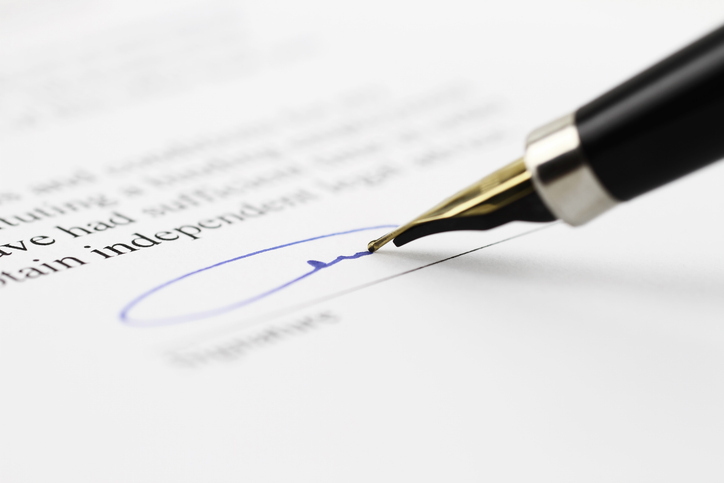For any innovator or entrepreneur, there is always an inherent tension between wanting to get a product out to market quickly, before it loses its unique selling point, and going through what can be a time-consuming process of filing an application to obtain a patent.
However, the long-term significance of protecting your innovations cannot be underestimated.
For a small company, the cost of applying for and maintaining even a small number of patents is significant, thus it is crucial that businesses are well informed on the steps that should be taken to effectively approach the process.
>See also: What to do when faced with a law suit for patent infringement
#1 – Get professional advice
A granted patent may be a very valuable asset. However, relatively minor flaws in your application can result in the patent not being granted or having much lower commercial value. These flaws can be very difficult, if not impossible, to rectify.
A patent attorney can give you confidential advice covering the legal requirements for a patent and can highlight commercial considerations that you should think about. They can give you advice on whether or not you are likely to get a patent for your invention, and if you decide to proceed, they can draft your application in a way that maximises the chance of obtaining a granted patent which is commercially useful. They are used to working with the patent office to address their objections, and they can also help you find professional representatives outside the UK who can help you apply for patents in other jurisdictions.
If you do decide to proceed on your own, the following tips may help you navigate the path to obtaining a UK patent.
Please note, the information in this article is for guidance only and should not be taken as legal advice.
#2 – Keep your idea secret
Make it explicit to employees that they are prohibited from divulging details of your invention, and use a non-disclosure agreement (NDA) if you must share details with another company (e.g. a supplier or potential investor).
If your invention is already publicly available – e.g. because you have been selling goods which incorporate the invention – then you are unlikely to be able to obtain a UK patent.
#3 – Determine that applying for a patent is the right thing to do
Obtaining a patent can be time-consuming and expensive, even if you do most or all of the work yourself. Once you have a patent, it is only useful if it supports your business in some way: for example, if you are using it to prevent others from copying your invention, you need to be prepared to enforce your patent, which can also be time-consuming and costly.
On the other hand, a patent can be a powerful and valuable asset. Benefits of patents can include preventing others from using your invention, generating licensing income, encouraging investment and even lowering your tax bill.
You should consider the potential costs and benefits as part of your business plan.
>See also: The Trunki patent case and small business IP
#4 – Check no-one has beaten you to it
Search for anything that could already disclose your invention: this might be in technical journals, product literature or earlier patents (or published patent applications). Inventions must be novel to be patentable, so anything which has already been made public cannot be patented. An invention must also have an “inventive step” so, for example, an obvious modification of an existing solution is unlikely to result in a patent.
#5 – Prepare your application: describe your invention
Patent applications are written in a very particular style in order to meet various requirements of patent law. In particular, they must describe the invention in sufficient detail so that someone else could put it into practice. Figures are particularly helpful in explaining aspects of the invention. Reading existing granted patents in your technical area can be useful to see how they are written.
Make sure you include any alternatives (for example, different materials that could be used), and if particular variants work better than others, make this clear.
Claims are numbered sentences which define exactly the scope of protection sought. Generally, these should be written broadly, omitting unnecessary or optional aspects. Subsequent (“dependent”) claims can provide narrower fallback positions.
#6 – File your application
You can file your own application online at the UK Patent Office.
The UK Patent Office also has a helpful guide which includes guidance on the requirements for an invention to be patentable, and explains the details of applying for a UK patent, including the fees.
#7 – Get it granted
The process to obtain a granted patent involves the patent office performing a search (to identify any relevant prior art) and an examination (to assess your invention in light of the prior art). During examination, you may exchange letters with the patent office in which you amend your application or provide arguments in support of your application.
If you are in a hurry to obtain a patent, you can request and pay for both of these when you file the application.
If you are not in a hurry and/or want to defer any expenditure, you can pay for these stages later. An application which has been abandoned (e.g. because fees haven’t been paid) can still be used as a “priority” application for later filings, which are filed within one year of the original filing (see the next step).
#8 – Strategic filing
If you are thinking of launching products or services in other countries, or you want to stop competitors from doing so, you might want to apply for patents in those countries as well. You may need a qualified representative to represent you before each national patent office.
During the one-year period after you file your first application, you can apply for further patents for your invention either in the same country, or in other countries. To the extent that they cover the same subject matter, these applications will be treated as if they were filed on the day that you filed your first application provided you indicate that you wish to “claim priority” to your earlier application.
The one-year deadline is very strict, so do not leave this until the last minute.
#9 – Check you can launch your product/service
A patent gives you a right to stop others from using your invention, but it does not guarantee that you can launch a product or service which includes your invention without consequences. This is because there may be other patents in force which cover your product (or even your invention). For example, you might manufacture a product, and your patent covers the product when it is coated in a new and inventive way with a special compound. However, if the compound itself is still under patent protection, you would be infringing that patent by selling your product.
A “freedom to operate” assessment checks whether any patents are in force which relate to your product. You may have to obtain a licence to these patents or modify your product to avoid infringement.
#10 – Keep innovating
All patent applications that have not been already abandoned are published 18 months after filing (or after the priority date). This means that your competitors will be able to see your invention. They may use this as a springboard to come up with their own improvements or alternative solutions. In order to ensure you can stay competitive, you may decide to file further applications to protect additional inventions.
David Hole is a UK and European patent attorney with EIP





